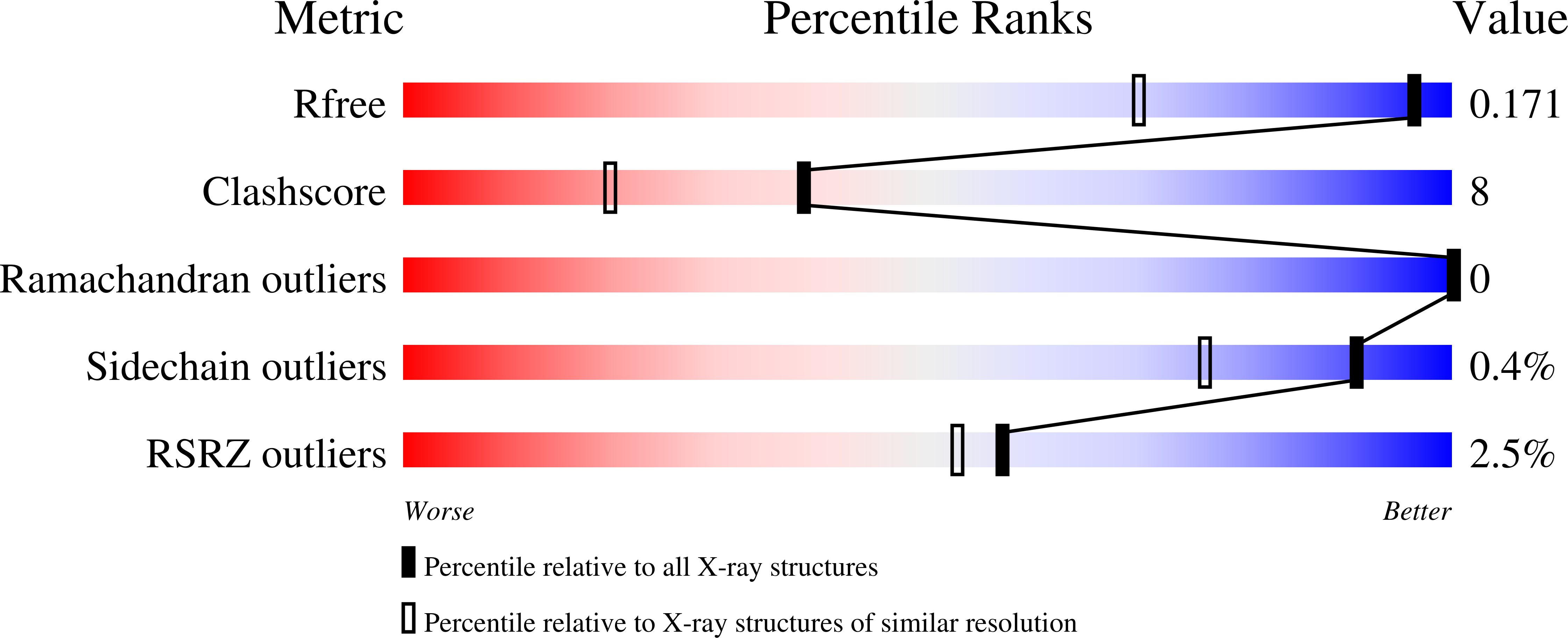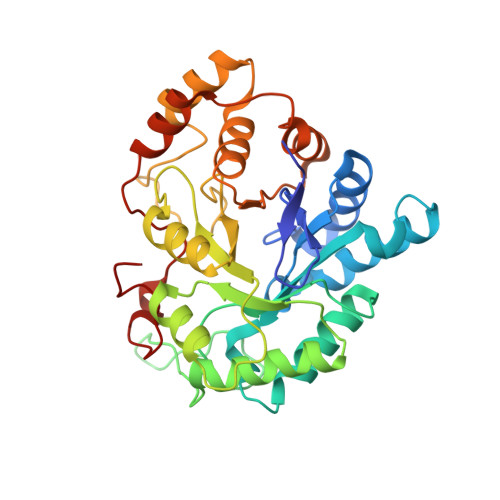Electrostatic Fields near the Active Site of Human Aldose Reductase: 2. New Inhibitors and Complications Caused by Hydrogen Bonds.
Xu, L., Cohen, A.E., Boxer, S.G.(2011) Biochemistry 50: 8311-8322
- PubMed: 21859105
- DOI: https://doi.org/10.1021/bi200930f
- Primary Citation of Related Structures:
3T42 - PubMed Abstract:
Vibrational Stark effect spectroscopy was used to measure electrostatic fields in the hydrophobic region of the active site of human aldose reductase (hALR2). A new nitrile-containing inhibitor was designed and synthesized, and the X-ray structure of its complex, along with cofactor NADP(+), with wild-type hALR2 was determined at 1.3 Å resolution. The nitrile is found to be in the proximity of T113, consistent with a hydrogen bond interaction. Two vibrational absorption peaks were observed at room temperature in the nitrile region when the inhibitor binds to wild-type hALR2, indicating that the nitrile probe experiences two different microenvironments, and these could be empirically separated into a hydrogen-bonded and non-hydrogen-bonded population by comparison with the T113A mutant, in which a hydrogen bond to the nitrile is not present. Classical molecular dynamics simulations based on the structure predict a double-peak distribution in protein electric fields projected along the nitrile probe. The interpretation of these two peaks as a hydrogen bond formation-dissociation process between the probe nitrile group and a nearby amino acid side chain is used to explain the observation of two IR bands, and the simulations were used to investigate the molecular details of this conformational change. Hydrogen bonding complicates the simplest analysis of vibrational frequency shifts as being due solely to electrostatic interactions through the vibrational Stark effect, and the consequences of this complication are discussed.
Organizational Affiliation:
Department of Chemistry, Stanford University, Stanford, California 94305-5080, United States.

















